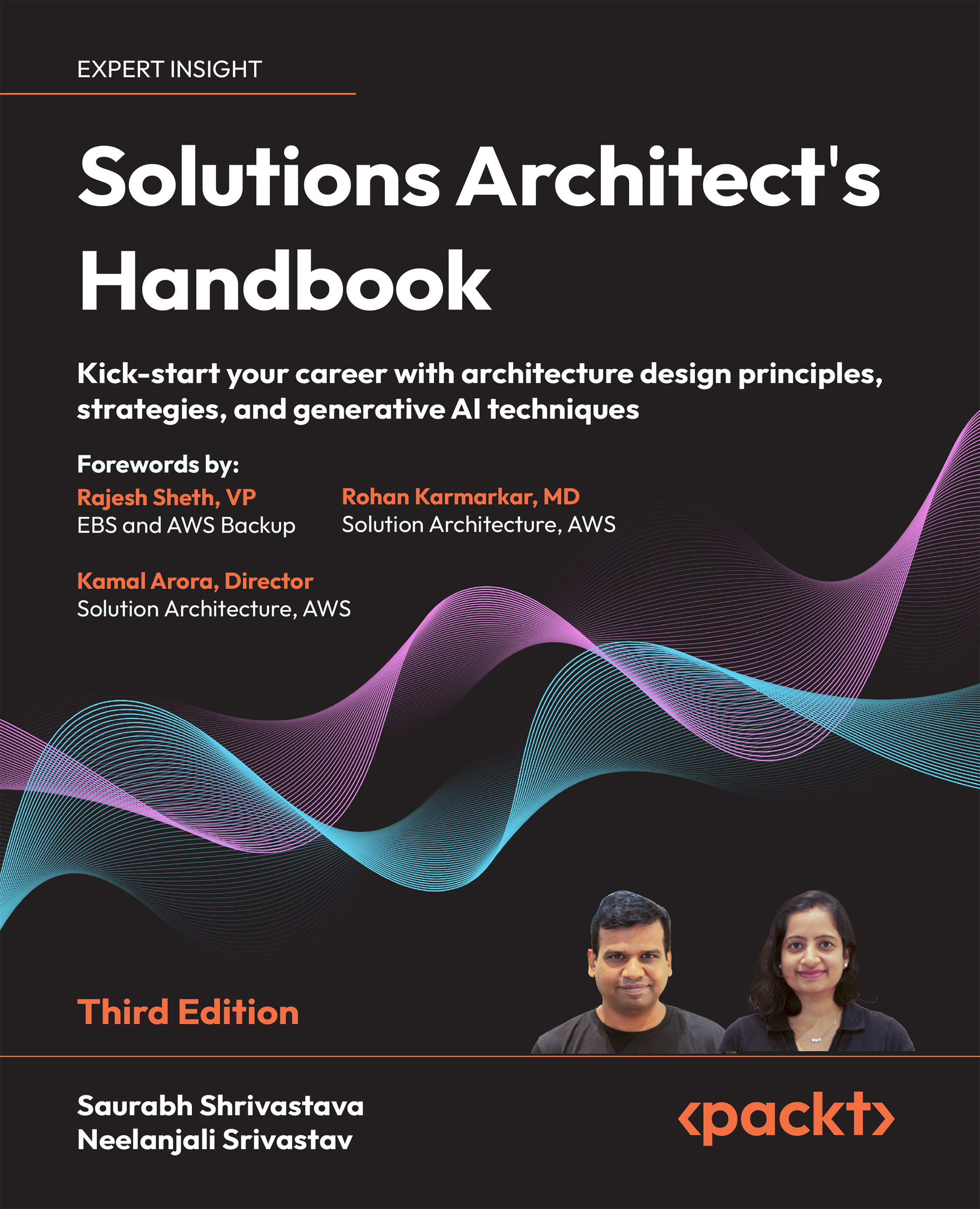Think loose coupling
A traditional application is deployed on a tightly integrated server fleet where each server has a specific responsibility. Often, applications depend on multiple servers for completeness of functionality.
As shown in the following diagram, in a tightly coupled architecture, the web server fleet has a direct dependency on all application servers, and vice versa:

Figure 2.7: Tightly coupled architecture
In the preceding architecture diagram, if one application server goes down, then all web servers will start receiving errors, as the request will route to an unhealthy application server, which may cause a complete system failure. With tightly coupled architecture, if you want to scale by adding and removing servers, it requires lots of work, as all connections need to be set up appropriately.
With loose coupling, you can add an intermediate layer, such as a load balancer or a queue, which automatically handles failures or scaling for you.
...

































































